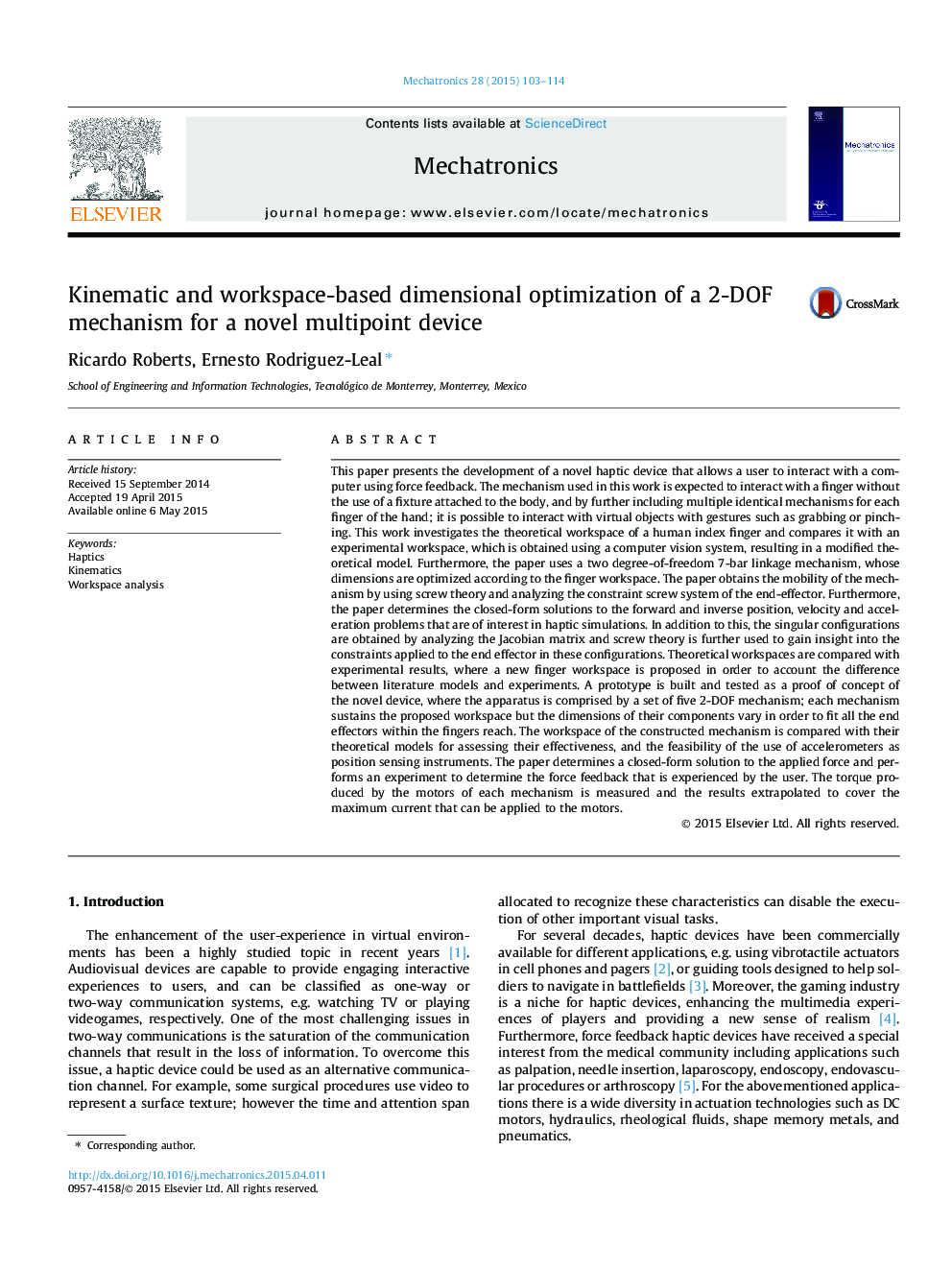| کد مقاله | کد نشریه | سال انتشار | مقاله انگلیسی | نسخه تمام متن |
|---|---|---|---|---|
| 732427 | 1461572 | 2015 | 12 صفحه PDF | دانلود رایگان |

This paper presents the development of a novel haptic device that allows a user to interact with a computer using force feedback. The mechanism used in this work is expected to interact with a finger without the use of a fixture attached to the body, and by further including multiple identical mechanisms for each finger of the hand; it is possible to interact with virtual objects with gestures such as grabbing or pinching. This work investigates the theoretical workspace of a human index finger and compares it with an experimental workspace, which is obtained using a computer vision system, resulting in a modified theoretical model. Furthermore, the paper uses a two degree-of-freedom 7-bar linkage mechanism, whose dimensions are optimized according to the finger workspace. The paper obtains the mobility of the mechanism by using screw theory and analyzing the constraint screw system of the end-effector. Furthermore, the paper determines the closed-form solutions to the forward and inverse position, velocity and acceleration problems that are of interest in haptic simulations. In addition to this, the singular configurations are obtained by analyzing the Jacobian matrix and screw theory is further used to gain insight into the constraints applied to the end effector in these configurations. Theoretical workspaces are compared with experimental results, where a new finger workspace is proposed in order to account the difference between literature models and experiments. A prototype is built and tested as a proof of concept of the novel device, where the apparatus is comprised by a set of five 2-DOF mechanism; each mechanism sustains the proposed workspace but the dimensions of their components vary in order to fit all the end effectors within the fingers reach. The workspace of the constructed mechanism is compared with their theoretical models for assessing their effectiveness, and the feasibility of the use of accelerometers as position sensing instruments. The paper determines a closed-form solution to the applied force and performs an experiment to determine the force feedback that is experienced by the user. The torque produced by the motors of each mechanism is measured and the results extrapolated to cover the maximum current that can be applied to the motors.
Journal: Mechatronics - Volume 28, June 2015, Pages 103–114